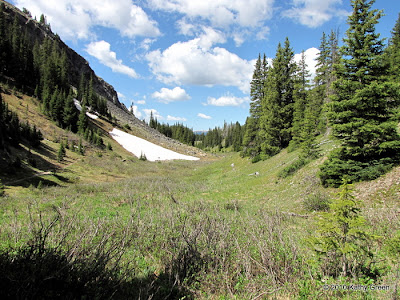The Journey to Native Plants
Finding this native beauty out in the wild
makes you want to plant it in your yard.
But will it grow there, and is it beneficial to your area?
This cactus is native to my area and grows nicely in my gardens.
It needs more care though than other non-native plants,
and provides little for pollinators. It's also prickly and somewhat
dangerous to work around. So, is it the best choice?
This bed of Creeping Phlox is also in my gardens. It's not native
to my area, but provides food for many types of pollinators, cover
for beetles, roly-poly bugs and other insects, shades the ground,
and conserves moisture. Should I remove it because it's not
a native? Good question, sure to bring on discussions!
Taking a hike among native plants usually brings about a strong
reaction one way or another. It's helpful to remember to take away
images of what you see, and then apply some of them to your garden
So what are some of the day trips to take before you make the long journey to native land? Many of them are easy and help you glimpse what's possible in your own yard:
- Visit an open space near your house. This can be a formal open space with trails, signs and helpful maps, or simply a uninhabited area that's wild. When you get there, notice what grows where and how the different plants support pollinators, birds and animals. What types of soils do you see? How much sun is there? Does this resemble your yard?
- Take a class. There are many classes available that give you an introduction to native plants and natural ecosystems. You don't need a formal education in horticulture or botany to enjoy learning about the basics. Who knows, you might enjoy it so much you want to learn more.
- Visit a yard near you that has something other than lawn and ornamentals. Depending on where you live, this might take a bit of time to find, but you'll be surprised at how gracious most gardeners are when asked about their gardens. The most they can say is "no" and then you move on to the next one.
- Get a group of your friends together and visit a park. Take lots of pictures and bring them back to have a discussion on what it would take to implement some of the wonders of nature in your yards. Group gardening makes tasks go quicker, you can purchase things in bulk, and bouncing ideas off others helps you with creativity.
- Most importantly, don't beat yourself up about not having native plants in your gardens. Just thinking about planting more of them is a start. Planting for pollinators, wildlife and nature doesn't mean an all or nothing commitment. I have many ornamentals in my gardens which happily thrive side-by-side with my natives. Both types are chosen for their positive contributions to pollinators, their non-aggressive nature, and their ability to grow in a sustainable gardening environment.
These rose hips come from a Morden Centennial Rose, not native but it
provides food for animals, flowers for pollinators, and beauty for me.
The clincher is that it's hardy to -30 degrees F, important at 7300'.
Now that I've given you a few ideas, I hope you will take the first steps on your journey into the land of native plants, and if you need a guide I would be honored to help you get there! Because just like you, my native plant journey is far from over. I just need to find more room in my gardens, or get rid of some ornamentals.
If you'd like to join in some discussions between native and non-native fans, please join my good friend Carole Browne over at Ecosystem Gardening. She explains the plusses so much better than I ever could and I look to her expertise as much as I can.







Lovely post, Kathy! And thanks for the shout out :) It certainly is a journey, I'm learning more all the time. And, like you every plant in my garden is chosen for its value to wildlife.
ReplyDeleteThat first flower is marvelous, i also find a lot of native plants in our tropical areas, but i dont have the time to locate good references in identifying them so i can point which are endemics, introduced, etc. I just photograph them immediately as i encounter them. Actually this is a nice hobby and i enjoy it.
ReplyDeleteBeautiful post. I've been on the journey for 30 years and I'm learning all the time.
ReplyDeleteI'm browsing through your blog--and loving the posts. This one is especially nice with great advice and good pictures.
ReplyDelete